Forum index >> Spotting fruiting trees >>
Setia Alam Community Trail
Page : 1ReplyNew topic
Hi all ……
A group of nature enthusiast (Alicia Teoh, Mei Jyn Yeow and, Melissa) of Setia Alam residence invited Ecowariors and MNS to visit the Setia Alam Community Trail. Henceforth, a forest trip was done on December 20, 2014. It was certainly a nice morning walk.

The participans. Alicia Teow is in purple blouse and sun glasses
As commonly a disturbed forest, the forest vegetation of Setia Alam Community Trail holds a mixture between the virgin forest plants and the successive forest plants. The virgin forest plants for example are Dipterocarpus and Shorea tress which locally are known as meranti. The second example are presented by Artocarpus griffithii, Eugissona tristis, and Porterandia anisophylla which the local names are terap, bertam, and bebalor.
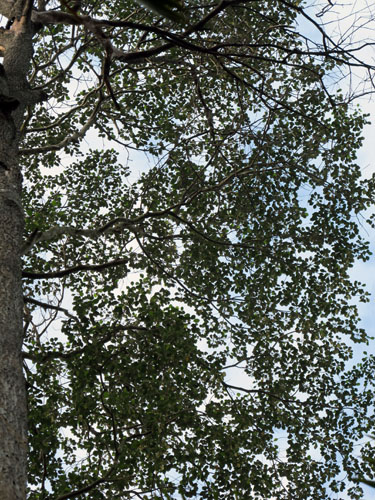
Canopy of Ixonanthes reticulata sp

Open and regenerated forest areas

Bertam occupied the open area

Fruits of bertam

Young plant of Artocarpus griffithii

Adult plant of Artocarpus griffithii
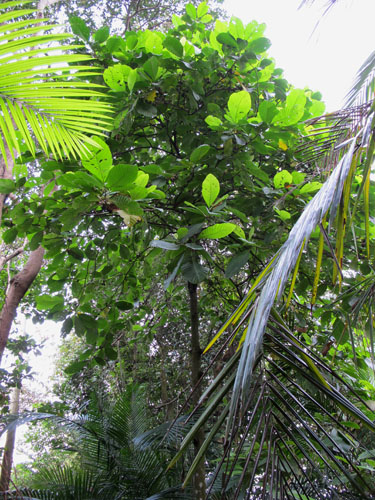
Porterandia anisophylla

Fruit of Porterandia anisophylla

Flower of Perterandia anisophylla

Leaves of Dipterocarpus crinitus
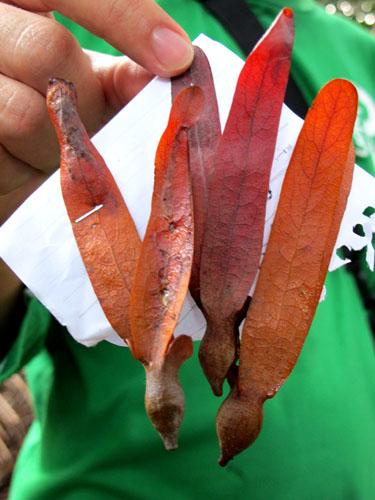
Fruits of Dipterocarpus crinitus

Tree with fruits of Dipterocarpus crinitus
Despite the various degrees of disturbances, I noticed few interesting findings: (1) a magnificent fig tree which I never saw during my forest explorations throughout this Malesia region and (2) pink fungus for which is the first time I saw it in the nature.

A giant fig tree

A wide canopy of fig tree

Fresh and dried of fig leaves

Cute pink fungus
The other remark I would like to put is that the forest has good chances to recover due to the presence of many young regenerating trees. Slopes, rocks and running water are diversifying the ecosystem. At the end of the trail a little dam increased the water level.
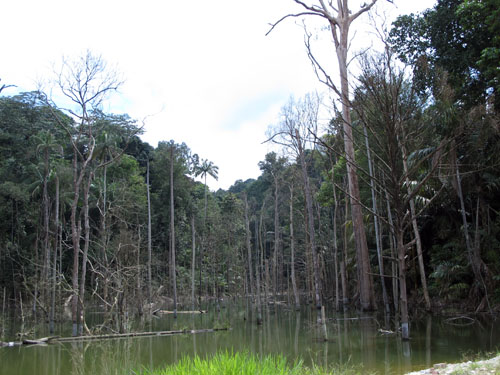
Water accumulated behind the dam at the entrance of the Setial Alam Community Trail
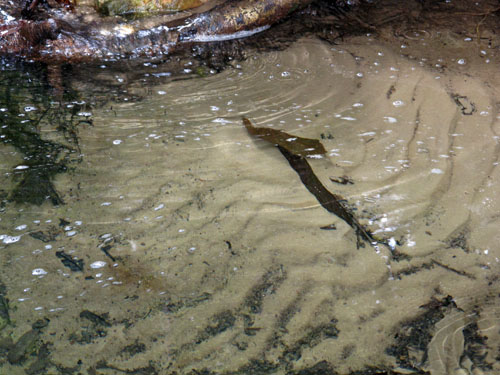
Clear water flowing inside the forest
A group of nature enthusiast (Alicia Teoh, Mei Jyn Yeow and, Melissa) of Setia Alam residence invited Ecowariors and MNS to visit the Setia Alam Community Trail. Henceforth, a forest trip was done on December 20, 2014. It was certainly a nice morning walk.

The participans. Alicia Teow is in purple blouse and sun glasses
As commonly a disturbed forest, the forest vegetation of Setia Alam Community Trail holds a mixture between the virgin forest plants and the successive forest plants. The virgin forest plants for example are Dipterocarpus and Shorea tress which locally are known as meranti. The second example are presented by Artocarpus griffithii, Eugissona tristis, and Porterandia anisophylla which the local names are terap, bertam, and bebalor.

Canopy of Ixonanthes reticulata sp

Open and regenerated forest areas

Bertam occupied the open area

Fruits of bertam

Young plant of Artocarpus griffithii

Adult plant of Artocarpus griffithii

Porterandia anisophylla

Fruit of Porterandia anisophylla

Flower of Perterandia anisophylla

Leaves of Dipterocarpus crinitus

Fruits of Dipterocarpus crinitus

Tree with fruits of Dipterocarpus crinitus
Despite the various degrees of disturbances, I noticed few interesting findings: (1) a magnificent fig tree which I never saw during my forest explorations throughout this Malesia region and (2) pink fungus for which is the first time I saw it in the nature.

A giant fig tree

A wide canopy of fig tree

Fresh and dried of fig leaves

Cute pink fungus
The other remark I would like to put is that the forest has good chances to recover due to the presence of many young regenerating trees. Slopes, rocks and running water are diversifying the ecosystem. At the end of the trail a little dam increased the water level.

Water accumulated behind the dam at the entrance of the Setial Alam Community Trail

Clear water flowing inside the forest
Page : 1ReplyNew topic
